#paschimottanasana pose
Explore tagged Tumblr posts
Text
3 Yoga Poses for Kidney Health: Nourish Your Vital Organs
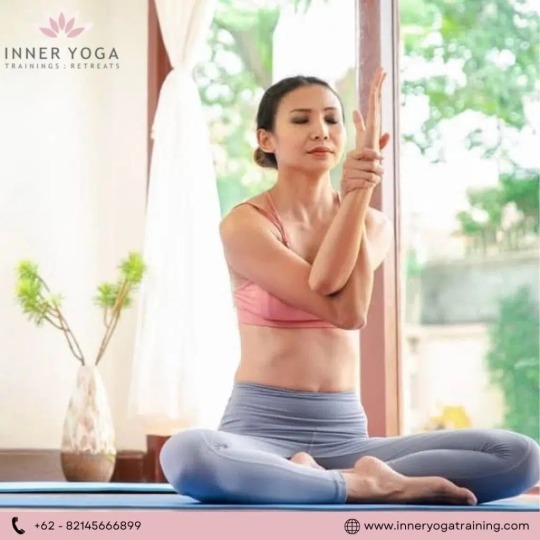
Kidneys play an essential role in maintaining the overall fluid level of our body. These nutty organs do the task of urine formation and blood purification. Moreover, you will be shocked to know the importance of the kidney’s role in acid-base balance and how it helps a person live a good life. Thus, these are essential for the smooth functioning of our body.
For more Information about Kidney health click the link below: https://inneryogatraining.com/category/yoga-news/
0 notes
Text
Tips for Practicing Seated Forward Fold (Paschimottanasana)

✅ Start with a Tall Spine – Sit up straight before folding to maintain good posture.
✅ Hinge from the Hips, Not the Back – Lead with your chest instead of rounding your spine.
✅ Bend Your Knees if Needed – A slight bend prevents strain on the hamstrings and lower back.
✅ Use a Yoga Strap – If you can’t reach your feet, loop a strap around them for support.
✅ Relax Your Shoulders & Neck – Avoid tensing up; let your upper body stay soft.
✅ Breathe Deeply – Inhale to lengthen, exhale to relax deeper into the pose.
✅ Hold Without Forcing – Let gravity guide you instead of pulling yourself forward.
✅ Come Out Slowly – Engage your core as you rise back to a seated position.
By following these simple tips, you can practice Paschimottanasana safely and effectively for a soothing, deep stretch 🙏
0 notes
Text
Happy International Yoga Day!

Today we celebrate the ancient practice of yoga, which has been a cornerstone of Indian culture for over 5,000 years. We honor the "Father of Modern Yoga," Tirumalai Krishnamacharya (1888-1989), who played a crucial role in popularizing yoga worldwide. We also honor the original "Father of Yoga," Patanjali, who authored the celebrated yoga sutras.
_History of Yoga:_
Yoga has its roots in the Indus Valley Civilization, with evidence of yoga practices dating back to 3000 BCE. The word "yoga" comes from the Sanskrit word "yuj" meaning "to unite." Over time, yoga evolved through various traditions, including Hatha Yoga, Raja Yoga, and Bhakti Yoga.
Patanjali:
Patanjali was a Hindu author, mystic, and philosopher who authored the Yoga Sutras, a categorization of yogic thought arranged in four volumes. He is regarded as an avatar of Adi Sesha and is believed to have lived between the 2nd century BCE and the 5th century CE ¹.
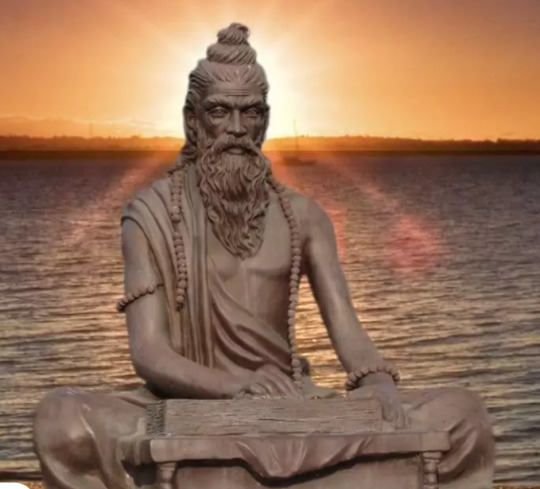
Tirumalai Krishnamacharya:
Born in 1888, Krishnamacharya was a Indian yoga master, ayurvedic healer, and scholar. He studied yoga under his father and later under the revered yoga guru, Rama Mohan Brahmachari. Krishnamacharya went on to teach yoga to prominent students, including B.K.S. Iyengar, K. Pattabhi Jois, and Indra Devi, who spread yoga globally.
BENEFITS OF YOGA
Yoga offers numerous benefits, including:
- Improved flexibility and strength
- Reduced stress and anxiety
- Enhanced mental clarity and focus
- Improved overall well-being
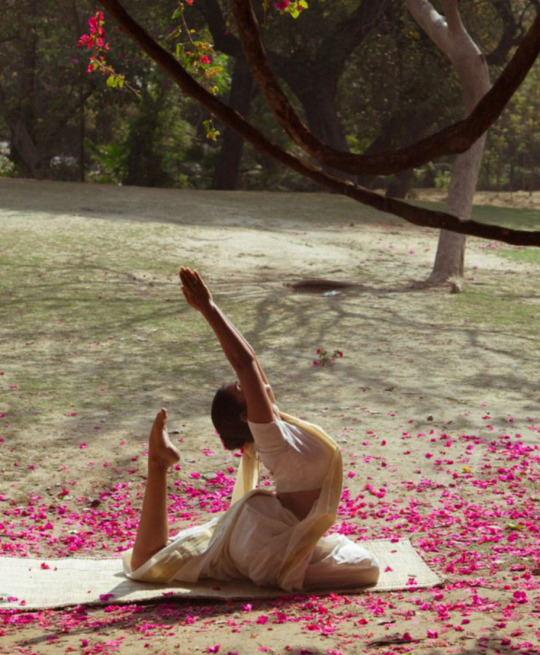
Popular Yoga Asanas:
1. Downward-Facing Dog (Adho Mukha Svanasana)
2. Warrior Pose (Virabhadrasana)
3. Triangle Pose (Trikonasana)
4. Seated Forward Fold (Paschimottanasana)
5. Tree Pose (Vrksasana)
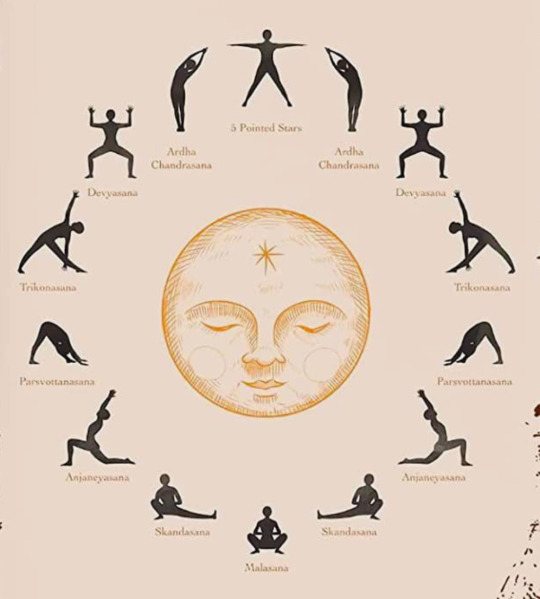
#InternationalYogaDay#YogaForAll#desiblr#desi tumblr#desi girl#being desi#desi tag#desi aesthetic#yoga#indian culture#health and wellness#desi#international yoga day#hinduism#hindublr
45 notes
·
View notes
Text

Last Quarter Moon in Gemini
Monday 26th August 2024
Last Quarter Moon in Gemini encourages introspection and reevaluation of how you communicate and share ideas. This is a time to resolve lingering issues and let go of outdated thinking patterns. Advice: Engage in honest conversations to clear the air. Activities: Journal about your thoughts, engage in a thoughtful dialogue, or write a letter to express what’s been left unsaid.
For Last Quarter Moon in Gemini, Seated Forward Bend (Paschimottanasana): This pose encourages reflection and introspection, aligning with Gemini's need for mental clarity. Sit with legs extended, and fold forward from the hips, reaching for your feet. Allow the stretch to soothe your nervous system, facilitating release of any lingering thoughts or emotions that need to be processed.
#astrology#astrology forecast#witchy#witchblr#horoscope#witch#witchcraft#witchy things#witchy vibes#moon#last quarter moon#gemini
11 notes
·
View notes
Text

Paschimottanasana, or Seated Forward Bend, is a fundamental yoga pose that stretches the entire back of the body, from the heels to the head. This asana calms the mind, relieves stress, and improves digestion. It also enhances flexibility in the spine, hamstrings, and lower back.
Apply for our upcoming: 300 Hour Yoga Teacher Training in Rishikesh
4 notes
·
View notes
Text

What is Paschimottanasana?
Paschimottanasana happens to be a classic yoga pose which means ‘Seated Forward Bend’ pose in English. This pose involves the practitioners folding the top half of their body over their seated lower half. In order to successfully practise this pose, practitioners are required to be mentally focused and flexible. When practising this pose, your entire body is stretched, including your calves, hamstrings, and your spine. In this article, let’s find out the types of Paschimottanasana, the steps and some precautions to consider while performing this yoga pose!
Types of Paschimottanasana
You can incorporate the following variations when you attempt to practise Paschimottanasana such that you don’t strain your muscles:
Paschimottanasana with a Prop
In case you find it hard to place your legs on the floor without bending your knees, you can use a prop to support your knees and place it below them. This prop could be a blanket or a flat pillow. If you feel any strain on your chest or lower abdomen, you can place this prop on your thighs such that when you stretch forward, you can breathe with greater ease.
Paschimottanasana with a Strap
In order to thoroughly stretch your body in this pose, you are required to hold your toes. If you aren’t able to do this, you can use a strap around your feet and hold onto it. This strap will provide you with additional support and will help you execute the Paschimottanasana yoga pose better.
Paschimottanasana with Bent Knees
In the event you find it hard to focus on your breath as your hamstrings feel tight, you could perform this pose with bent knees. Furthermore, you could sit on a pillow which will lift up your hips and allow you to reach your toes.
#paschimottanasana#yoga#yogapractice#yogainspiration#forwardfold#yogaeverydamnday#yogateacher#yogaeveryday#yogaeverywhere#asana#yogagirl#yogachallenge#yogalove#yogalife#yogapose#yogi#seatedforwardfold#yogaposes#yogajourney#seatedforward#yogini#halasana#forwardbend#yogaathome#ashtangayoga
8 notes
·
View notes
Text
Discover Your Inner Yogi: 31 Essential Poses for Beginners to Practice at Home
Embarking on the path of yoga is a fantastic decision for numerous reasons.
Beyond the physical benefits of increased strength, flexibility, and balance, yoga serves as a powerful tool for stress reduction through specialized breathing techniques known as pranayama.
Yoga is diverse, offering various poses to cater to different needs.
Now, let's delve into the joy of yoga with a focus on 31 essential poses for beginners to practice at home. These foundational poses not only serve as a physical workout but also contribute to mental well-being.
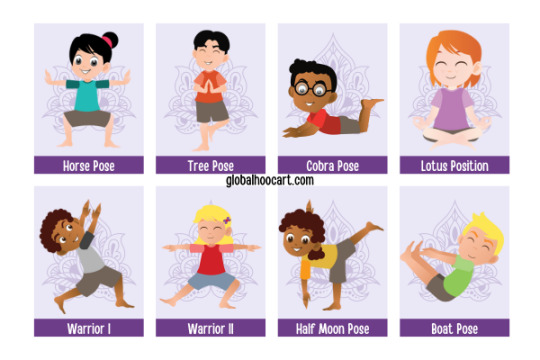
1. Downward Facing Dog (Adho Mukha Svanasana): A classic yoga pose that can be tricky for beginners, emphasizing weight distribution and heel stretching.
2. Mountain Pose (Tadasana): Equally important as Downward Facing Dog, it focuses on alignment, grounding, and spine lengthening.
3. Warrior I (Virabhadrasana I): A standing pose emphasizing forward-facing hips, crucial for building strength.
4. Warrior II (Virabhadrasana II): Similar to Warrior I but with hips facing the side, promoting openness and strength.
5. Extended Side Angle (Utthita Parvakonasana): Involving a modification for beginners, it offers a gentle stretch with forearm support.
6. Triangle Pose (Utthita Trikonasana): Another essential pose, engaging leg strength and enhancing flexibility in multiple areas.
7. Standing Forward Bend (Uttanasana): An easy pose for beginners, promoting spine flexibility and relaxation.
8. Reverse Warrior (Viparita Virabhadrasana): Combining a stance similar to Warrior I with a gentle side bend or backbend.
9. Garland Pose (Malasana): A squatting pose that stretches muscles around the pelvis, beneficial for hip flexibility.
10. Half Forward Bend (Ardha Uttanasana): Also known as Flat-Back Forward Bend, it contributes to improving overall body awareness.
11. Pyramid Pose (Parsvottanasana): A standing forward bend made more accessible for beginners with the use of yoga blocks.
12. Raised Hands Pose (Urdhva Hastasana): Starting from Mountain pose, it offers a full-body stretch, ideal for beginning your practice.
13. Low Lunge: A standing pose emphasizing proper alignment for a beneficial stretch, with modification options for support.
14. Tree Pose (Vrksasana): An excellent introduction to balancing postures, encouraging stability and mindfulness.
15. Downward Facing Dog Split: A basic yoga pose for beginners focusing on core strength and balance.
16. Plank Pose: Not just a balancing pose but a fundamental exercise for building core strength and stability.
17. Cat-Cow Stretch (Chakravakasana): A gentle backbend sequence enhancing body awareness, especially beneficial for beginners or those with back pain.
18. Bridge Pose (Setu Bandha Sarvangasana): A gentle backbend for beginners, enhancing spine extension and countering the effects of prolonged sitting.
19. Cobra Pose (Bhujangasana): A fundamental backbend that strengthens back muscles and promotes flexibility.
20. Knees, Chest, and Chin (Ashtanga Namaskara): An essential part of the sun salutation series, serving as an alternative to Chaturanga Dandasana.
21. Staff Pose (Dandasana): A seated version of Mountain pose, offering alignment guidance for various seated poses.
22. Cobbler's Pose (Baddha Konasana): A comfortable stretch for inner thighs, often using props for support.
23. Easy Pose (Sukhasana): A cross-legged sit made more comfortable with props, promoting flexibility and undoing the effects of prolonged chair sitting.
24. Half Lord of the Fishes Pose (Ardha Matsyendrasana): A seated twist benefiting spinal mobility and aiding digestion.
25. Head to Knee Pose (Janu Sirsasana): Easier than traditional forward bends, offering a gentle stretch one leg at a time.
26. Seated Forward Bend (Paschimottanasana): A fantastic hamstring stretch targeting the entire back of the body.
27. Seated Wide Angle Straddle (Upavistha Konasana): A wide-legged forward bend providing a unique stretch and focusing on proper form.
28. Happy Baby Pose (Ananda Balasana): Balancing effort and ease, this delightful pose offers a gentle stretch for the back, hips, thighs, and ankles.
29. Supine Spinal Twist (Supta Matsyendrasana): A passive twist promoting flexibility, relaxation, and a sense of completion to your practice.
30. Child's Pose (Balasana): A resting pose that allows you to take a break whenever needed, promoting a gentle stretch and relaxation.
31. Corpse Pose (Savasana): A serene conclusion to your session, allowing a smooth transition from the yoga mat to the rest of your day.
In conclusion, these 31 basic yoga poses for beginners at home offer a comprehensive and accessible introduction to the joy of yoga. Remember, yoga is for everyone, and the journey is as important as the destination. Enjoy the practice, embrace self-awareness, and savor the harmonious blend of effort and relaxation that yoga brings to your life.
4 notes
·
View notes
Text
Paschimottanasana, or the Seated Forward Bend, is a foundational yoga posture that stretches the entire back body, from the heels to the crown of the head. It is a calming yet powerful asana that promotes flexibility, relaxation, and inner awareness. Sarah Deleon Guerrero emphasizes the importance of mindful breathing and proper alignment in this pose to maximize its benefits.
0 notes
Text

🧘♂️ 6 Yoga Poses to Reduce Back Pain 🧘♀️
Try these six powerful poses to stretch, strengthen, and soothe your spine:
✨ Child’s Pose (Balasana) – Gently stretches the lower back & hips
✨ Downward Dog (Adho Mukha Svanasana) – Relieves tension & improves flexibility
✨ Bridge Pose (Setu Bandhasana) – Strengthens the lower back & core
✨ Cobra Pose (Bhujangasana) – Opens up the spine & improves posture
✨ Legs Up the Wall (Viparita Karani) – Relieves pressure & boosts circulation
✨ Seated Forward Bend (Paschimottanasana) – Stretches the back & hamstrings
Roll out your mat & give your back the care it deserves! 🌿💆♂️
#YogaForBackPain#HealingThroughYoga#YogaTherapy#BackPainRelief#YogaForHealth#MindfulMovement#HolisticHealing#YogaForFlexibility#StretchAndStrengthen#SpinalHealth#PainFreeLiving#WellnessJourney#YogaEveryDay#SelfCareMatters#YogaTribex
0 notes
Text
Yoga Blocks 101: Why Every Yogi Needs Them and How to Choose the Right One

Yoga blocks are an essential prop for yogis of all levels, offering support, stability, and alignment. Whether you're a beginner trying to improve your flexibility or an experienced yogi looking to deepen your poses, yoga blocks can be a game-changer. At Proyog, we believe that using the right accessories enhances your practice. In this guide, we’ll explore why yoga blocks are a must-have and how to choose the best one for your needs.
Why You Need Yoga Blocks
Yoga blocks offer several benefits that make them indispensable in any yoga practice. Some of the key advantages include:
1. Enhanced Stability
For beginners, balancing in certain poses can be difficult. Yoga blocks provide additional support, making it easier to maintain proper posture and alignment.
2. Injury Prevention
Overstretching or forcing a pose can lead to injuries. Yoga blocks help reduce strain by bringing the floor closer to you, ensuring you ease into poses safely.
3. Deeper Stretches
Even advanced yogis can benefit from yoga blocks when attempting deeper stretches. They help extend your range of motion without putting unnecessary pressure on joints and muscles.
4. Better Alignment
Misalignment in poses can lead to discomfort or long-term issues. Yoga blocks allow you to maintain the correct posture, ensuring your body is aligned properly.
Choosing the Right Yoga Block
Not all yoga blocks are created equal. Here are some factors to consider when selecting the best one for your practice:
1. Material
Yoga blocks are typically made from foam, cork, or wood. Each material has its pros and cons:
Foam Blocks – Lightweight and soft, great for beginners.
Cork Blocks – Eco-friendly, firmer than foam, and provides excellent support.
Wooden Blocks – Sturdy and durable, but heavier and less comfortable.
2. Size
The standard yoga block size is 9"x6"x4", but smaller and larger options are available. If you have smaller hands or require less height, a smaller block might be more comfortable.
3. Firmness
Soft Blocks – Provide comfort but less stability, ideal for restorative poses.
Firm Blocks – Offer better support for balance and strength-building poses.
Using Yoga Blocks Effectively
Here’s how you can incorporate yoga blocks into different aspects of your practice:
1. For Beginners
Triangle Pose (Trikonasana) – Place a block under your hand if you can’t comfortably reach the floor.
Downward Dog (Adho Mukha Svanasana) – Elevate your hands on blocks to reduce strain on your wrists.
2. For Flexibility
Seated Forward Bend (Paschimottanasana) – Rest a block under your feet to help extend your reach.
Pigeon Pose (Eka Pada Rajakapotasana) – Place a block under your hip for support and a deeper stretch.
3. For Strength
Plank Pose (Phalakasana) – Grip a block between your hands to engage arm and core muscles.
Chaturanga (Chaturanga Dandasana) – Use blocks under your shoulders to maintain proper form.
Pairing Yoga Blocks with Other Essentials
To get the most out of your yoga routine, it's essential to use the right gear. Proyog’s high-quality yoga blocks work best when paired with yoga mats for men and yoga dress for women to ensure a comfortable and safe practice.
1. Yoga Mats for Men
Men often require durable and slip-resistant mats. Proyog’s yoga mats for men provide superior grip and cushioning to support intense workouts and prolonged sessions.
2. Yoga Dress for Women
Wearing the right attire is crucial for comfort and ease of movement. Proyog’s yoga dress for women is designed from breathable, organic fabric that allows free movement during any pose.
Common Mistakes to Avoid When Using Yoga Blocks
1. Using the Wrong Height
Yoga blocks can be placed at three heights—low, medium, and high. Choosing the right height ensures optimal support for each pose.
2. Relying Too Much on Blocks
While yoga blocks provide assistance, they shouldn’t become a crutch. Aim to build flexibility and strength gradually to reduce dependence on them over time.
3. Improper Placement
Placing blocks incorrectly can cause imbalance and discomfort. Always ensure they are positioned securely and evenly.
Final Thoughts
Yoga blocks are an essential tool that can transform your practice by improving flexibility, strength, and stability. Whether you are a beginner looking for extra support or an advanced yogi deepening your stretches, Proyog’s premium yoga blocks are designed to meet your needs.
Pairing them with Proyog’s yoga mats for men and yoga dress for women ensures a complete, comfortable, and effective yoga experience. Ready to enhance your yoga journey? Explore Proyog’s collection today and experience the benefits of high-quality yoga gear!
Source: https://medium.com/@indiaproyog/yoga-blocks-101-why-every-yogi-needs-them-and-how-to-choose-the-right-one-d33119f40c4f
0 notes
Text
✨ Yogic Poses for Infertility ✨
Boost your reproductive health naturally with these powerful yoga asanas:
🧘♀️ Supta Baddha Konasana (Butterfly Pose) – Opens the hips & improves blood circulation. 🧘♂️ Paschimottanasana (Seated Forward Fold) – Reduces stress & balances hormones. 🧘♀️ Sarvangasana (Shoulder Stand) – Enhances blood flow to reproductive organs. 🧘♂️ Hastapadasana (Hand-to-Foot Pose) – Stimulates the nervous system & relieves tension.
Incorporate these poses into your daily routine and embrace a healthier, balanced body! 🌸
👉 To know more, visit our website!
#KamanandaYoga#YogaForFertility#HealingThroughYoga#HolisticWellness#InfertilitySupport#YogaForWomen#MindBodyBalance#NaturalHealing#YogaJourney#YogaEveryday#FertilityBoost#HealthyHormones#YogaForHealth#SelfCare#WellnessMatters
0 notes
Text
✨ Feeling tense?
Unwind with Seated Forward Fold (Paschimottanasana)! ✨
This calming stretch relieves tight hamstrings, soothes the mind & improves flexibility. Breathe deep, fold forward, and let stress melt away! 🧘♀️💙
Seated Forward Fold (Paschimottanasana) for a Calming Stretch

0 notes
Text
Let’s Shed Some Light On Several Yoga Prices That Are Effective For Stress Relief
In today’s fast-paced world, stress is almost inevitable. Whether it’s work pressures, personal challenges, or everyday life demands, stress can take a significant toll on our physical and mental health. One effective way to manage and reduce stress is through Yoga Training In Thane West. The combination of mindful movement, deep breathing, and relaxation techniques helps activate the body’s relaxation response, reducing the impact of stress on our lives. Yoga not only helps stretch and strengthen the body but also promotes mental clarity and emotional balance. In this article, we’ll explore several yoga poses that are particularly effective for stress relief, helping you relax, recharge, and rejuvenate.

Child’s Pose (Balasana): Child's Pose is a gentle, restorative posture that encourages relaxation. It allows the body to rest in a way that releases tension from the back, shoulders, and neck—common areas of stress buildup. This pose also promotes deep breathing, which helps to activate the parasympathetic nervous system (responsible for rest and digestion).
Seated Forward Fold (Paschimottanasana): This calming stretch targets the back and hamstrings while soothing the nervous system. Forward bends naturally signal the body to slow down and can alleviate the feeling of stress and anxiety.
Cat-Cow Pose (Marjaryasana-Bitilasana): Cat-Cow is a dynamic sequence that involves moving between two postures, helping to release tension in the spine while calming the nervous system. This flow encourages a mindful connection between movement and breath, which helps reduce stress levels.
Legs Up the Wall Pose (Viparita Karani): This restorative pose involves lying on your back and placing your legs up against a wall. It’s incredibly effective for reducing stress because it promotes deep relaxation and enhances circulation, helping to calm the body and mind after a long day.
Bridge Pose (Setu Bandhasana): Bridge Pose helps to open up the chest and hips, releasing any tension stored in those areas. It also strengthens the lower body while promoting relaxation. This pose is especially beneficial when you feel mentally or physically drained, as it re-energizes the body and mind.
Corpse Pose (Savasana): Often regarded as the most important pose in yoga, Savasana allows the body and mind to fully relax. This pose involves lying flat on your back with your arms and legs extended, focusing on deep breathing. It’s a great way to end your practice, as it helps integrate the benefits of the previous poses and reduces stress.
For Fitness Classes In Thane West, you can connect with us without any delay.
About Durva Sports Academy
Durva Sports Academy is one of the leading names because it offers a wide range of fitness services and training at economical prices.
Credit:- https://penzu.com/p/f240d6a065b5093e
0 notes
Text

Mercury enters Virgo
Friday 26th July 2024
Precision and analytical thinking flourish as Mercury enters Virgo. Communication becomes clear and detail-oriented. Advice: Focus on organization and refine your plans. Activities: Create a detailed to-do list, engage in problem-solving tasks, or enhance your skills through study. Use this time to bring order to your thoughts and actions.
For Mercury entersing Virgo, Seated Forward Bend (Paschimottanasana) promotes introspection and focus. Sit with legs extended, reach forward, and hold your feet or shins. Relax into the stretch, breathing deeply and calming the mind. This pose supports the analytical and detail-oriented nature of Virgo, fostering mental clarity and organization.
#astrology#astrology forecast#witchcraft#witch#witchy things#witchy#witchblr#horoscope#witchy vibes#mercury#virgo
16 notes
·
View notes
Text
Safe and Effective Yoga Poses for Each Trimester of Pregnancy
Pregnancy is a time of profound physical and emotional change. As your body adapts to support the growing baby, gentle movement can help ease discomfort, reduce stress, and prepare for labor. Yoga is an excellent way to support your body throughout pregnancy, but it’s important to choose poses that are safe and effective for each trimester. Here’s a guide to some of the best yoga poses for each stage of pregnancy, along with how you can incorporate online yoga classes into your practice.
First Trimester: Nurturing Early Changes
During the first trimester, your body is adjusting to pregnancy, and you might experience fatigue, nausea, and sensitivity in your breasts. While your body is still in the early stages of pregnancy, yoga can help alleviate some of these discomforts and maintain overall well-being. Focus on gentle poses that support energy levels and promote relaxation.
1. Cat-Cow Pose (Marjaryasana-Bitilasana)
This pose helps to relieve tension in the spine and improves flexibility in the back and neck. Start on all fours with wrists directly under your shoulders and knees under your hips. As you inhale, drop your belly and lift your head and tailbone (cow pose), and as you exhale, round your spine, tucking your chin to your chest (cat pose). This movement increases circulation to the spine, reduces stiffness, and helps ease any early back discomfort.
2. Seated Forward Fold (Paschimottanasana)
This gentle stretch helps release tension in the lower back and hamstrings. Sit on the floor with your legs extended in front of you. Inhale to lengthen your spine, and as you exhale, fold forward from the hips, reaching for your feet or shins. Avoid any deep bends and only fold to a comfortable stretch.
3. Supported Bound Angle Pose (Supta Baddha Konasana)
This restorative pose helps open the hips and relax the body. Sit with your feet together and knees wide apart. Lean back onto pillows or a bolster for support. This pose encourages relaxation and can also help reduce early pregnancy anxiety.
Second Trimester: Strengthening and Balancing
As you move into the second trimester, your belly will begin to grow, and you may experience more energy and fewer symptoms of morning sickness. It’s the perfect time to focus on strengthening the body, especially the core and legs, while maintaining balance and flexibility.
1. Warrior II Pose (Virabhadrasana II)
Warrior II strengthens the legs and opens the hips, which is important as your body prepares for the growing baby. Step your feet wide apart and turn one foot out to 90 degrees. Extend your arms parallel to the floor and bend your front knee. Make sure your knee is over your ankle and engage your legs to hold the position. This pose builds endurance and stability.
2. Tree Pose (Vrksasana)
Balancing poses can be especially helpful during the second trimester as they promote mental focus and body awareness. Stand with your feet together, and slowly shift your weight onto one leg. Place the sole of your opposite foot on your inner thigh or calf (avoiding the knee). Bring your palms together in front of your chest or extend your arms overhead. This pose helps improve balance and strengthens the legs.
3. Bridge Pose (Setu Bandhasana)
This pose helps open the chest, hips, and strengthens the glutes and lower back. Lie on your back with your knees bent and feet flat on the floor. Press through your feet as you lift your hips towards the ceiling, squeezing your glutes. Keep your shoulders and arms relaxed on the mat. Bridge pose is excellent for improving posture and alleviating lower back pain, which can become more common as your belly grows.
Third Trimester: Preparing for Labor and Relaxation
As you approach your due date, yoga can help keep you strong, flexible, and relaxed in preparation for labor. Focus on poses that open the hips, relieve lower back pain, and encourage deep breathing for relaxation.
1. Wide-Legged Forward Fold (Prasarita Padottanasana)
This pose helps open the hips and stretch the hamstrings. Stand with your legs wide apart and fold forward at the hips, keeping a slight bend in your knees. Rest your hands on the floor or use blocks for support. This stretch encourages flexibility in the hips, which will be beneficial for labor.
2. Goddess Pose (Utkata Konasana)
A great hip opener and leg strengthener, Goddess Pose is perfect for the third trimester. Stand with your legs wide, toes pointing outward, and bend your knees to 90 degrees, lowering your hips toward the ground. Bring your arms up with elbows bent to shoulder height. Hold this position for several breaths to strengthen the lower body and open the hips in preparation for childbirth.
3. Child’s Pose (Balasana)
Child’s Pose is a gentle stretch that helps relieve tension in the back and hips while promoting deep relaxation. Sit on your heels and fold forward, resting your forehead on the mat, with your arms extended forward or by your sides. This restorative pose is perfect for relaxation during your practice, especially towards the end of your pregnancy when you may feel tired or need a break.
Incorporating Online Yoga Classes Into Your Pregnancy Routine
Online yoga classes are a great way to stay consistent with your practice throughout pregnancy, especially when you may not have the time or energy to attend in-person classes. Many platforms offer prenatal yoga classes specifically designed for each trimester.
Benefits of Online Yoga Classes:
Flexibility: You can practice at your own pace and schedule, whether it’s during a lunch break, in the morning, or in the evening.
Variety: Online platforms often offer a wide range of prenatal classes, from gentle stretches to more energetic sessions, tailored to each stage of pregnancy.
Expert Instruction: Certified prenatal yoga instructors can guide you through safe and effective practices that are appropriate for your changing body.
Supportive Community: Many online platforms offer community forums or social media groups, allowing you to connect with other expectant mothers for support and encouragement.
Conclusion
Yoga is a powerful tool to support a healthy pregnancy. By choosing the right poses for each trimester, you can ease discomfort, improve strength and flexibility, and prepare your body for the challenges of labor and delivery. With the convenience of online classes, it’s easier than ever to maintain a safe and effective yoga practice throughout your pregnancy. Whether you’re in your first, second, or third trimester, yoga can help you feel more connected to your body and your baby, ultimately leading to a smoother, healthier pregnancy.

0 notes
Text
Yoga Routine for Beginners: A Simple Guide to Get Started

Starting yoga can feel overwhelming, but with the right Yoga Routine for Beginners, you can ease into the practice with confidence. Whether you’re looking to improve flexibility, reduce stress, or build strength, following a structured Beginner Yoga Routine is the perfect way to begin. This guide will walk you through How to Start Yoga, introduce essential Beginner Yoga Poses, and help you develop a consistent practice.
How to Start Yoga: A Beginner’s Guide
If you’re wondering How to Start Yoga, follow these simple steps:
Find a Quiet Space – Choose a calm and comfortable place to practice.
Wear Comfortable Clothing – Loose or stretchable clothes allow better movement.
Use a Yoga Mat – A good-quality mat provides grip and comfort.
Start with Basic Poses – Focus on foundational Beginner Yoga Poses before trying advanced moves.
Follow a Routine – Stick to a simple and effective Yoga Routine for Beginners to build consistency.
Beginner Yoga Poses to Try
As a part of Yoga Basics for Beginners, here are a few easy poses to include in your Beginner Yoga Routine:
Mountain Pose (Tadasana) – Improves posture and balance.
Downward Dog (Adho Mukha Svanasana) – Stretches the back and hamstrings.
Child’s Pose (Balasana) – A relaxing pose that helps relieve tension.
Cat-Cow Pose (Marjaryasana-Bitilasana) – Enhances spinal flexibility.
Seated Forward Bend (Paschimottanasana) – Stretches the back and legs.
Simple Yoga Exercises for Beginners
Incorporating Simple Yoga Exercises into your daily routine can help improve flexibility and mindfulness. Try practicing Yoga for Newbies with this quick sequence:
Start with 5 minutes of deep breathing to relax the body.
Perform Mountain Pose for alignment and posture.
Flow into Downward Dog to stretch and strengthen muscles.
Hold Child’s Pose for a calming effect.
End with Seated Meditation for mental clarity.
Tips for Starting Yoga Practice
When Starting Yoga Practice, keep these tips in mind:
Go at Your Own Pace – Don’t rush into advanced poses.
Practice Regularly – Even 10-15 minutes a day can make a difference.
Listen to Your Body – Avoid pushing beyond your comfort level.
Stay Consistent – A daily Yoga Routine for Beginners will build strength and flexibility over time.
#YogaRoutineforBeginners#BeginnerYogaRouting#HowtoStartYoga#BeginnerYogaPoses#YogaBasicsforBeginners#SimpleYogaExercises#YogaforNewbies#StartingYogaPractice#YogaforBeginnersGuide
0 notes